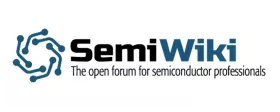After Five Years, 28nm Future Remains Bright!
Five years ago TSMC started 28nm mass production and it went on to become one of the most versatile and successful process technologies in history. The first wave was triggered by an unprecedented demand for application processors from smartphone and tablet vendors. Today it’s widely assumed that 28nm demand will continue growing with the introduction of mid- and low-end smartphones, burgeoning Internet of Things applications, and other second-wave opportunities such as automotive.
Not resting on its laurels, TSMC recently announced several significant process improvements to offer its customers and they are increasing capacity to accommodate strong ongoing demand for 28nm solutions.
To read the full article, click here
Related Semiconductor IP
- 1.8V/3.3V Switchable GPIO with I2C, HDMI, LVDS, ESD & Analog in TSMC 28nm
- 30mA, Capless High PSRR LDO Regulator for RF and Analog Applications in TSMC 28nm
- 40mA, Capless High PSRR LDO Regulator for RF and Analog Applications in TSMC 28nm
- 10mA, Capless High PSRR LDO Regulator for RF and Analog Applications in TSMC 28nm
- Real-Time-Clock Analog, Include 32K XOSC, Capaless LDO, POR, VDT - TSMC 28nm
Related Blogs
- Moore's Law and 28nm Yield
- TSMC 28nm Design Advisory
- TSMC 28nm moves toward reality, with its retinue
- Altera's intros 28nm Stratix V FPGA family
Latest Blogs
- Rivian’s autonomy breakthrough built with Arm: the compute foundation for the rise of physical AI
- AV1 Image File Format Specification Gets an Upgrade with AVIF v1.2.0
- Industry’s First End-to-End eUSB2V2 Demo for Edge AI and AI PCs at CES
- Integrating Post-Quantum Cryptography (PQC) on Arty-Z7
- UA Link PCS customizations from 800GBASE-R Ethernet PCS Clause 172
